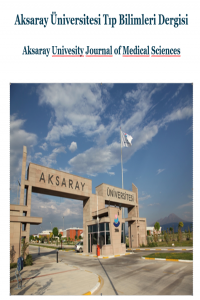Lag Pedicle Screw Fixation Technique for Hangman’s Fracture
Hangman's fracture, Lag screw, Posterior
___
- 1. Schneider RC, Livingston KE, Cave AJ, Hamilton G. “Hangman’s fracture” of the cervical spine. J Neurosurg 1965;22 (2):141–154 https://doi.org/10.3171/jns.1965.22.2.0141
- 2. M. Montalbano, C. Fisahn, M. Loukas, R. J. Oskouian, J. R. Chapman, and R. S. Tubbs, “Pediatric hangman’s fracture: a comprehensive review,” Pediatric Neurosurgery 2017;52(3): 145-150 DOI:10.1159/000455923
- 3. Murphy H, Schroeder GD, Shi WJ, Kepler CK, Kurd MF, Fleischman AN, et al. Management of Hangman’s fractures: a systematic review. J Orthop Trauma 2017;31:S90–5 doi: 10.1097/BOT.0000000000000952.
- 4. Sharpe JP, Magnotti LJ, Weinberg JA, Schroeppel TJ, Fabian TC, Croce MA. The old man and the C-spine fracture: impact of halo vest stabilization in patients with blunt cervical spine fractures. J Trauma Acute Care 2016;80:76–80 DOI: 10.1097/ta.0000000000000894
- 5. Ma W, Xu R, Liu J, Sun S, Zhao L, Hu Y et al. Posterior short-segment fixation and fusion in unstable Hangman’s fractures. Spine (Phila Pa 1976) 2011;36:529-533 doi: 10.1097/BRS.0b013e3181d60067.
- 6. Marton E, Billeci D, Carteri A. Therapeutic indications in upper cervical spine instability. Considerations on 58 cases. J Neurosurg Sci 2000;44(4):192–20 PMID: 11327288
- 7. Al-Mahfoudh R, Beagrie C, Woolley E, Zakaria R, Radon M, Clark S, et al. Management of typical and atypical hangman’s fractures. Global Spine J 2016; 6:248-256 doi: 10.1055/s-0035-1563404
- 8. Li XF, Dai LY, Lu H, Chen XD. A systematic review of the management of hangman’s fractures. Eur Spine J 2006;15: 257-269 DOI: 10.1007/s00586-005-0918-2
- 9. Naderi S, Arman C, Guvencer M, Korman E, Senoglu M, Tetik S, et al . An anatomical study of the C-2 pedicle. J Neurosurg Spine 2004;1:306-10
- 10. Dalbayrak S, Yılmaz M, Firidin M, Naderi S. Traumatic spondylolisthesis of the axis treated with direct c2 pars screw. Turk Neurosurg 2009;19:163-7 PMID: 19431128
- 11. Hakato J, Wrofski J. Operative treatment of hangman's fractures of C2. Posterior direct pars screw repair or anterior plate-cage stabilization? Neurol Neurochir Pol 2008;42:28-36 PMID: 18365960
- 12. Müller EJ, Wick M, Muhr G. Traumatic spondylolisthesis of the axis: treatment rationale based on the stability of the different fracture types. Eur Spine J. 2000;9:123–8 doi: 10.1007/s005860050222.
- 13. ElMiligui Y, Koptan W, Emran I. Transpedicular screw fixation for type II Hangman’s fracture: a motion preserving procedure. Eur Spine J. 2010;19:1299–305 DOI: 10.1007/s00586-010-1401-2
- 14. Borne GM, Bedou GL, Pinaudeau M. Treatment of pedicular fractures of the axis. J Neurosurg. 1984;60:88–93 https://doi.org/10.3171/jns.1984.60.1.0088
- ISSN: 2757-6655
- Yayın Aralığı: Yılda 3 Sayı
- Başlangıç: 2020
- Yayıncı: Aksaray Üniversitesi
Mustafa YILMAZ, Sevil ALKAN ÇEVİKER, Emine Kübra DİNDAR DEMİRAY, Cemile UYAR
Lag Pedicle Screw Fixation Technique for Hangman’s Fracture
Densel ARAÇ, Fatih KESKİN, Mehmet ERDİ, Yaşar KARATAŞ
AKSARAY İLİNDE BEBEK VE ÇOCUKLARDA İNGUİNAL HERNİ TECRÜBEMİZ
KULAK HELİKSİNDE HMB-45 NEGATİF DEV KUTANÖZ ANJİOMYOLİPOM OLGU SUNUMU VE LİTERATÜR TARAMASI
Ayşegül ALPCAN, Serkan TURSUN, Didem ALİEFENDİOĞLU, Ayça TÖREL ERGÜR
Pediatrik Kompleks Bölgesel Ağrı Sendromu Tedavisi
Hüseyin KAPLAN, Emine ÖZDEMİR KAÇER
Hastanemizdeki Mavi Kod Bildirimlerinin Retrospektif Olarak Değerlendirilmesi
Emel YILDIZ, Dilber İŞLER, Özlem ARIK, Halil YILDIZ, Canan BALCI
